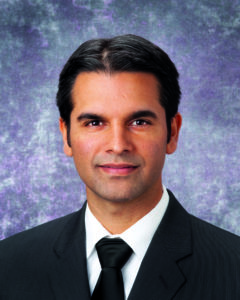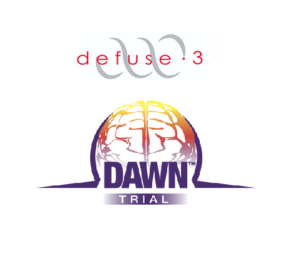
A series of studies published in the Journal of NeuroInterventional Surgery is bringing attention to potential constraints in the practice-changing DAWN and DEFUSE 3 trials, when applied to a real-world population, in terms of patient selection, the representability of the 24-hour time window, and the lack of consideration for patients considered to be “slow progressors”.
The findings of the DAWN and DEFUSE 3 trials have had a profound effect on the acute ischaemic stroke field; providing the basis for new American Heart Association/American Stroke Association guidelines; the UK now following suit, with NICE guidelines soon to extend the eligibility window for treatment of thrombectomy to up to 24 hours for selected acute ischaemic stroke (AIS) patients.
“New evidence shows that extending the eligibility period of thrombectomy to up to 24 hours can be very cost-effective. There is also a potential benefit for improved quality of life by reducing the level of disability people can experience as a result of a stroke,” said Paul Chrisp, the director for the Centre for Guidelines at NICE.
Now, two studies consecutively carried out by Shashvat M Desai, Ashutosh P Jadhav (senior author) and colleagues, University of Pittsburgh, Pittsburgh, USA, investigated endovascular thrombectomy (EVT) outside of DAWN and DEFUSE 3. The first study looked at trial ineligible patients who presented in the six to 24-hour time window. The second identified patients who received thrombectomy beyond 24 hours, but otherwise met DAWN criteria.
In this initial trial, Jadhav and colleagues carried out a retrospective review of patients admitted for acute ischaemic stroke to a single comprehensive stroke centre during the DAWN trial enrolment period, identifying all patients presenting in the six to 24-hour time window, and subsequently investigated this sample for trial eligibility, baseline characteristics, treatment, and outcomes.
The team found that approximately 70% (n=142) of the 204 patients presenting six to 24 hours after time last known well (TLKW), with a National Institutes of Health Stroke Scale (NIHSS) score of ≥6 and AIS due to anterior circulation large vessel occlusion, were DAWN and/or DEFUSE 3 ineligible. Jadhav et al reported that previous exclusion from these trials occurred most commonly due to large infarct core (>70mL), pre-modified Rankin Scale (mRS) >2, absence of trial eligible salvageable issue, and/or middle cerebral artery occlusion (segment 2, M2).
In terms of treatment, 26% (n=37) of trial ineligible patients with large vessel occlusion strokes received off-label EVT and 30% of them achieved functional independence (mRS 0–2) at 90-days, with an acceptable safety profile. Additionally, rates of symptomatic intracranial haemorrhage and mortality were 8% and 24%, respectively.
Although the authors acknowledged that the current study was limited by its retrospective nature, small sample size and a clinical judgement-based patient selection process, they maintained that it suggests that further liberalisation of indications for EVT in late time windows is achievable.
Jadhav and colleagues were able to conclude that strict adherence to DAWN and DEFUSE 3 criteria would have denied EVT to 18% (n=37) of the 204 patients who harbored an anterior circulation large vessel occlusion presenting to a comprehensive stroke centre within six to 24 hours of TLKW, and with an NIHSS score of ≥6.
In their second investigation, the same authors acknowledged the proportion of patients in the DAWN trial with large vessel occlusion strokes who had “enough collateral support to sustain a penumbra and harbour small ischaemic core”—also known as “slow progressors”. In light of this, Jadhav and colleagues set out to examine patients who met the DAWN criteria but underwent thrombectomy beyond 24 hours of TLKW.
Jadhav et al carried out a retrospective review of endovascular thrombectomy databases at three comprehensive stroke centres in order to compare baseline characteristics, efficacy, and safety outcomes with patients in the DAWN trial intervention arm.
Of the 21 patients that met inclusion criteria, rates of successful reperfusion (modified thrombolysis in cerebral infarction [mTICI] 2b–3, 81% vs. 84%, p=0.72), 90-day functional independence (mRS 0–2, 43% vs. 48%, p=0.68), as well as symptomatic intracranial haemorrhage (5% vs. 6%, p=0.87), were comparable across the two groups.
Despite its technical success, the study was again limited by its retrospective nature and small sample size. The authors also reported that a lower proportion of patients in the current case series had atrial fibrillation compared with patients in the DAWN trial intervention arm, which may have impacted the outcomes.
However, Jadhav and colleagues concluded that the findings of the study—“the largest case series for anterior circulation thrombectomy beyond 24 hours of last known well”—support the fact that EVT appears to be safe and feasible in patients with acute ischaemic stroke due to large vessel occlusion meeting all DAWN trial criteria but treated beyond 24 hours of TLKW.
Furthermore, the authors stressed their support for directing patient selection on a tissue-based paradigm without any clear time cut-off. A further study conducted by Ronan Motyer (Beaumont Hospital, Dublin, Ireland) and colleagues, who also advocate for a tissue-based approach to patient selection, investigated EVT in a late intervention cohort (beyond 12 hours of stroke onset).
 Maintaining the likes of recent trials, the authors write: “both clinical and neuroimaging findings are considered a better determinant of individual pathophysiology than symptom duration alone”. However, in contrast to DAWN and DEFUSE 3, Moyter and colleagues calculated the Alberta Stroke Program Early CT Score (ASPECTS) and collateral grade in order to guide their patient selection.
Maintaining the likes of recent trials, the authors write: “both clinical and neuroimaging findings are considered a better determinant of individual pathophysiology than symptom duration alone”. However, in contrast to DAWN and DEFUSE 3, Moyter and colleagues calculated the Alberta Stroke Program Early CT Score (ASPECTS) and collateral grade in order to guide their patient selection.
Motyer and colleagues carried out a retrospective review of all EVT cases performed at their affiliated institution for proximal anterior circulation acute ischaemic stroke with symptom onset over 12 hours. Patients were assessed with non-contrast CT brain and multiphase CT angiography.
In total, of the 542 patients with AIS who underwent EVT from June 2010 to July 2017, only 4.6% (25 patients) were >12 hours from stroke onset. The median age of these patients was 69 years, with median NIHSS on presentation at 14, ranging from 5–26. Additionally, median ASPECTS was 8 (IQR 8–9), while the rate of moderate-good collateral status was 96% (in 24 patients).
Furthermore, the authors reported that the rate of successful recanalisation (TICI 2b–3) was 88% in 22 patients. Additionally, in 13 patients, the rate of functional independence was 52%, demonstrated by a 90-day modified Rankin Scale score of 0–2.
In light of the good functional outcomes and acceptable safety parameters that were observed, the authors reported that their institutional experience of EVT performed more than 12 hours from onset is reflective of previous trials outlining the benefits of EVT in selected patients, despite using alternative neuroimaging techniques to inform patient selection.
Moving forward, Motyer and colleagues postulated that although EVT is rapidly establishing itself as best practice beyond conventional time limits, uncertainty still remains regarding the assessment of late presenting AIS patients—particularly the role of advanced neuroimaging in this context. In conclusion, Motyer and colleagues write: “It is essential that optimal neuroimaging and associated inclusion criteria be correctly defined so as to ensure maximum benefit and minimum harm to these patients”.
Furthermore, in accordance with Motyer and colleagues, Jadhav et al maintain that both multicentre analyses and randomised controlled trials are necessary to validate these late window findings, and to further define thresholds for EVT, in order to maximise indications and prevent long-term disability.
Additional interpretation
Commenting on these findings, Joseph Broderick (University of Cincinnati, Cincinnati, USA) told NeuroNews that they should be interpreted with caution, and not used to expand current practice. “These smaller case series in later time windows and outside of the criteria for DAWN and DEFUSE 3 are intriguing and supportive of randomised trials of EVT for these subgroups (larger cores and longer time windows). Identifying more patients who can benefit from EVT is needed. However, these data should not be used to expand current clinical practice and indications for EVT since the true efficacy and safety in these patients as compared to best medical therapy has yet to be determined.”
Furthermore, Jan Gralla from the Department for Interventional and Diagnostic Neuroradiology, University of Bern, Switzerland, commented: “Since the inflation of positive RCTs in 2014, treatment as well as the understanding of the pathology of stroke underwent fundamental changes. Both the DAWN and DEFUSE 3 trials have shifted the envelope again, extending the time window for recanalisation and therefore facilitated endovascular treatment for a large spectrum of patients.”
However, Gralla said: “To ‘prove the principle’ within initial trials, selection to the most promising patient population are applied, in this case limiting the time window and using clinical and neuroimaging parameters. The striking difference between the control and treatment arm and consequently the low number-needed-to-treat (NNT 2–4) in both the DAWN and DEFUSE 3 trials already indicates room for broader selection criteria. The results of the aforementioned retrospective study support this assumption of potential under treatment.”
The above article leads into discussion on futile recanalisation and refusal of endovascular treatment. The recent years have shown that many advocated parameters such as old age and late time window per se, or as a single decision criteria, have not proved true. Others are under investigation; I personally suspect that low ASPECTS score/large infarct core and the high NIHSS will meet the same fate.”
In light of the data presented by Jadhav and colleagues, as well as Motyer’s team, Gralla deduced: “Further randomised data is necessary to elucidate the true limitations of the treatment. It is likely that only a combination of individual parameters especially neuroimaging will identify candidates for futile recanalisation. For the time being: When in doubt, consider treatment.”












